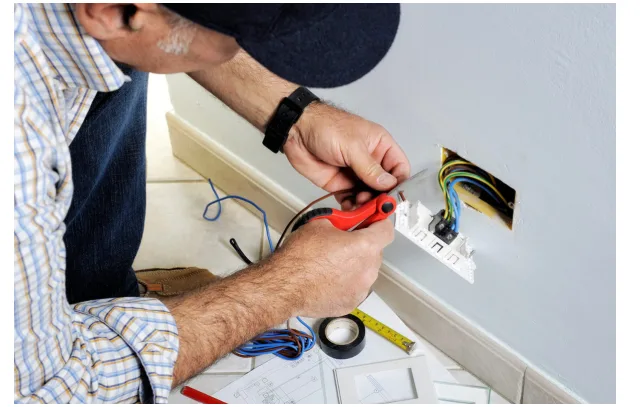Overcoming The Barriers Involved in Affordable Dental Care
Dental care remains one of the most inaccessible healthcare services in the United States, creating a significant public health challenge that affects millions of Americans. Despite advances in medical coverage through various healthcare initiatives, oral health continues to be treated as separate from overall health, resulting in widespread gaps in care that disproportionately impact vulnerable populations.
The Financial Reality of Dental Care
Dental care presents the highest level of financial barriers compared to other types of healthcare services, creating a situation where many Americans must choose between oral health and other essential needs. With out-of-pocket costs accounting for 38.9% of dental spending, one-third of adults don’t visit a dentist annually. This statistic reveals the profound impact that cost has on preventive care, which ultimately leads to more expensive emergency treatments.
The burden of dental expenses extends beyond simple procedure costs. 25% of adults reported they had had to delay dental care or treatment because of the cost, while those in lower income brackets face even more severe challenges. Those with incomes less than £20,000 were 3x more likely to have extracted one of their own teeth than those with household incomes above £20,000, highlighting the desperate measures people take when professional care becomes unaffordable.
Geographic and Access Barriers
Access to dental care isn’t merely a financial issue; geography plays a crucial role in determining who can receive treatment. 2 million adults in the UK have to travel at least 40 miles to access dental care, and similar patterns exist across rural America where dental provider shortages are severe. This geographic disparity forces patients to choose between losing wages from extended travel time or foregoing necessary treatment entirely.
The concentration of dental providers in urban areas has created dental deserts in rural communities, where residents may need to travel several hours for routine care. This situation is particularly challenging for elderly patients or those without reliable transportation, effectively creating a two-tiered system where location determines access to oral healthcare.
Insurance Coverage Limitations
While the Affordable Care Act expanded healthcare coverage significantly, coverage of dental care for adults is not guaranteed, creating a gap that leaves many insured Americans without dental benefits. In 2023, the average expenditure on dental care insurance in the United States amounted to 132.56 U.S. dollars, but even those with insurance often face substantial out-of-pocket expenses due to coverage limitations.
Many dental insurance plans operate with annual maximums that haven’t increased significantly over decades, while dental costs have risen substantially. These limitations mean that patients requiring extensive treatment often exhaust their benefits early in the year, leaving them to pay full costs for additional necessary procedures.
Systemic Healthcare Separation
According to J.P Prosthodontics (jpprosthodontics.com), the artificial separation between medical and dental care has created institutional barriers that prevent integrated treatment approaches. This separation manifests in different insurance systems, separate provider networks, and disconnected treatment planning that fails to address the relationship between oral health and overall systemic health conditions.
The medical and dental fields often operate in isolation, despite growing evidence that oral health significantly impacts conditions such as diabetes, heart disease, and pregnancy outcomes. This fragmentation means patients must navigate separate systems, often with different approval processes, provider networks, and coverage limitations.
Vulnerable Populations Face Compounded Challenges
Children and adults from the most deprived areas were less likely to have had contact with NHS primary dental care, demonstrating how socioeconomic status compounds access barriers. These populations often face multiple simultaneous challenges including transportation limitations, work schedule conflicts, language barriers, and competing health priorities that make dental care seem like a luxury rather than a necessity.
Medicaid patients face additional barriers as many dental providers don’t accept Medicaid due to low reimbursement rates, creating a situation where having insurance doesn’t guarantee access to care. This limitation particularly affects children, elderly adults, and disabled individuals who rely on government insurance programs.
Solutions and Path Forward
Addressing affordable dental care barriers requires comprehensive approaches that tackle financial, geographic, and systemic issues simultaneously. Community health centers, mobile dental clinics, and teledentistry programs represent innovative solutions that bring care directly to underserved populations. These models reduce travel barriers while providing culturally competent care in familiar community settings.
Policy solutions include expanding Medicaid dental coverage for adults, integrating dental and medical care delivery systems, and increasing funding for dental education programs that encourage practice in underserved areas. Public health approaches such as community water fluoridation and school-based sealant programs provide population-level prevention that reduces the need for expensive restorative treatments.
Technology also offers promising solutions through teledentistry platforms that enable remote consultations and triage, helping patients access appropriate care while reducing unnecessary emergency department visits for dental problems. These innovations can help bridge geographic gaps while making initial assessments more accessible and affordable.
The path toward affordable dental care requires recognizing oral health as integral to overall health, restructuring insurance systems to provide meaningful coverage, and implementing innovative delivery models that meet people where they are. Only through coordinated efforts addressing financial, geographic, and systemic barriers can we ensure that oral healthcare becomes accessible to all Americans, regardless of their economic status or location.


